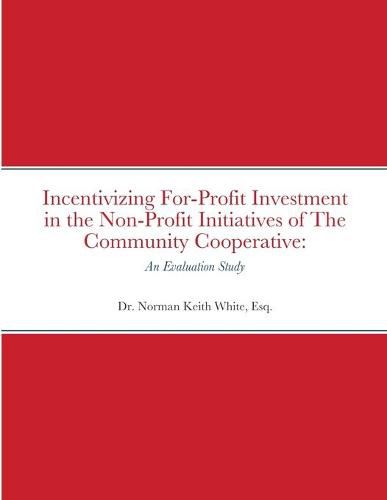Readings Newsletter
Become a Readings Member to make your shopping experience even easier.
Sign in or sign up for free!
You’re not far away from qualifying for FREE standard shipping within Australia
You’ve qualified for FREE standard shipping within Australia
The cart is loading…






This title is printed to order. This book may have been self-published. If so, we cannot guarantee the quality of the content. In the main most books will have gone through the editing process however some may not. We therefore suggest that you be aware of this before ordering this book. If in doubt check either the author or publisher’s details as we are unable to accept any returns unless they are faulty. Please contact us if you have any questions.
This qualitative study evaluated the steps necessary for a non-profit organization to incentivize private investment in its non-profit initiatives. The research questions for this study examined the knowledge, motivation and organizational factors that influenced the Community Cooperative's efforts to incentivize private investment in its non-profit initiatives. The research methods included interviews with the Board of Directors of the Community Cooperative and a document review. The researcher received unanimous approval by the Board of Directors to conduct the study and gained approval through school leadership and the university's Institutional Review Board. The data analysis produced several themes. These themes were that the Board of Directors possessed procedural knowledge gaps and self-efficacy motivational gaps. Additionally, the organizational settings did not provide enough structural support or accountability. Without enough structural support and accountability, the organization could develop ideas but failed to execute on those ideas. These themes were exhibited by the stakeholders' inability to collect data and create programming that incentivized private investment in its non-profit initiatives. Recommendations included allocating resources towards the development of programming and data collection that incentivize private investment. The other recommendation includes providing training for the stakeholders in the organization so that they learn how to execute the steps required to achieve the organizational goal.
$9.00 standard shipping within Australia
FREE standard shipping within Australia for orders over $100.00
Express & International shipping calculated at checkout
Stock availability can be subject to change without notice. We recommend calling the shop or contacting our online team to check availability of low stock items. Please see our Shopping Online page for more details.
This title is printed to order. This book may have been self-published. If so, we cannot guarantee the quality of the content. In the main most books will have gone through the editing process however some may not. We therefore suggest that you be aware of this before ordering this book. If in doubt check either the author or publisher’s details as we are unable to accept any returns unless they are faulty. Please contact us if you have any questions.
This qualitative study evaluated the steps necessary for a non-profit organization to incentivize private investment in its non-profit initiatives. The research questions for this study examined the knowledge, motivation and organizational factors that influenced the Community Cooperative's efforts to incentivize private investment in its non-profit initiatives. The research methods included interviews with the Board of Directors of the Community Cooperative and a document review. The researcher received unanimous approval by the Board of Directors to conduct the study and gained approval through school leadership and the university's Institutional Review Board. The data analysis produced several themes. These themes were that the Board of Directors possessed procedural knowledge gaps and self-efficacy motivational gaps. Additionally, the organizational settings did not provide enough structural support or accountability. Without enough structural support and accountability, the organization could develop ideas but failed to execute on those ideas. These themes were exhibited by the stakeholders' inability to collect data and create programming that incentivized private investment in its non-profit initiatives. Recommendations included allocating resources towards the development of programming and data collection that incentivize private investment. The other recommendation includes providing training for the stakeholders in the organization so that they learn how to execute the steps required to achieve the organizational goal.